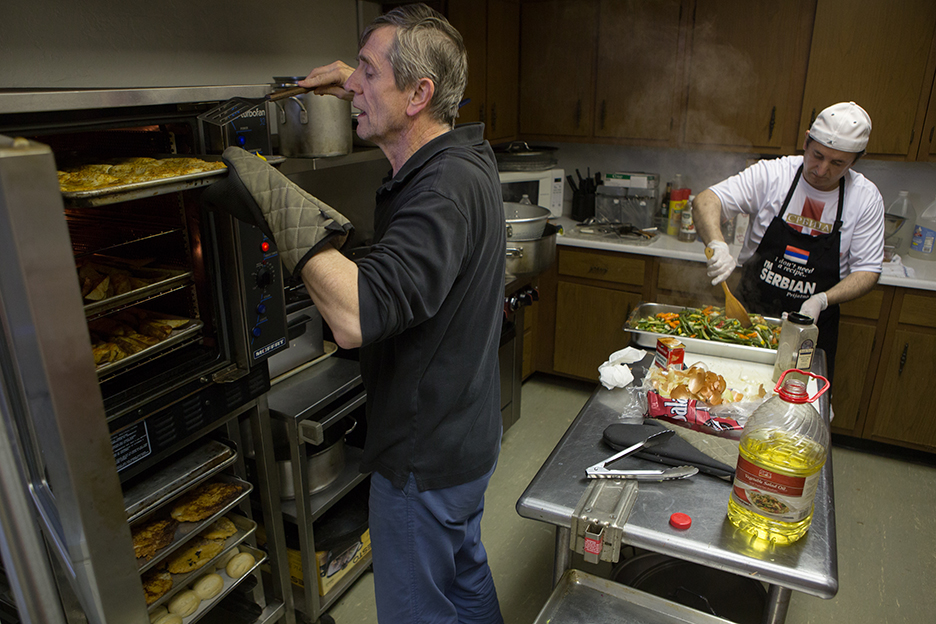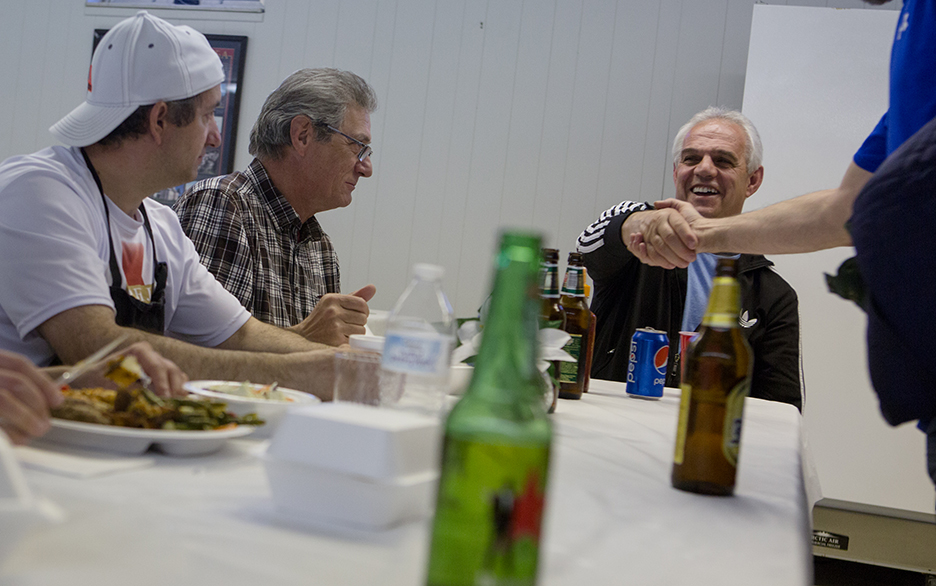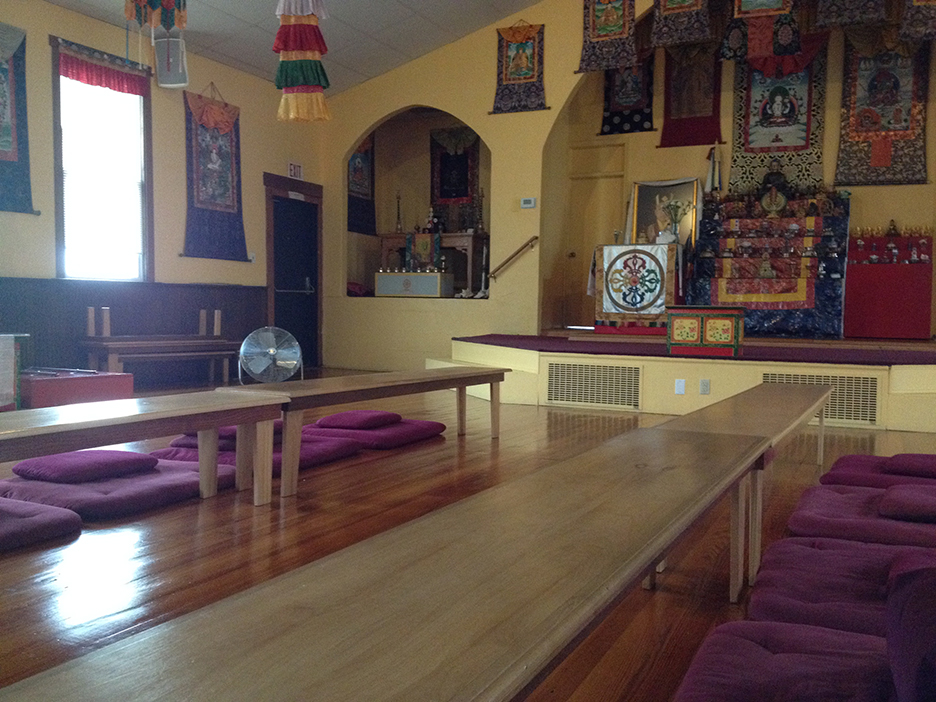Building Community Relationships
Text by Caroline Toy
Recordings, editing, and photographs by Lauren Pond
At many sites and events where ARSP researchers record, we try to make ourselves barely noticeable to the community. While we get permission to record and answer questions openly, it’s not unusual for us to document a service or festival understanding that our recordings are only an auditory snapshot, a single, ephemeral slice of religious life at a particular place and time.
In other cases, the opposite is true, and we set out to create a collage of such snapshots, stitched together by interviews with community members, the cycle of a sacred calendar, or narratives of change. These deeper relationships allow us to document how religious communities create and understand their place in their religious landscapes (local, historical, political, and the like). Many of the examples featured on this blog so far – such as the Nine Worlds Kindred community of Asatru practitioners, Wat Buddha Samakidham temple, and Three Cranes Grove of Druids (who sponsor the Krampus Parade in Columbus) – come from ongoing relationships with communities where we’ve recorded multiple times, interviewed clergy and practitioners, and tried to capture religious practices in multiple contexts.
These relationships are enormously rich and each evolves very differently. This evolution is driven by the communities’ own interests in working with us, particular themes that emerge in our conversations with members, how the community presents itself to the public, and even dramatic changes in material circumstances.
St. Stevan of Dechani Serbian Orthodox Church in Columbus, Ohio
This past week, a group of researchers at OSU attended a Friday evening fish fry dinner at the St. Stevan of Dechani Serbian Orthodox Church. The church hosts these dinners every Friday in Lent, and advertises them prominently to the public on their website and signs placed to attract passing cars. The research team was led by Lauren Pond, the ARSP multimedia content producer, who has been working with this church for over a year. In fact, if you’ve explored our preliminary website, you may have come across her photos and audio collage from the fish dinners in Lent 2016:


Lauren has attended services at St. Stevan of Dechani, and she and I also recorded at the church’s Serbian cultural festival in July 2016. As a result, Lauren has great contacts with a number of committed members of this community, a relatively small church where we typically see many of the same people at every event. Last Friday we were happy to see David Kos again, who welcomed us warmly, sat with us while we ate, and showed us the church’s beautiful collection of traditional Serbian resist-dyed Easter eggs. Another church member also showed us around the sanctuary, explaining this history of the art on display. Other members were familiar to us from the vendors’ booths and lamb roast at the summer festival.
An ongoing community relationship like this one can also be a great way to introduce new researchers to fieldwork. In addition to myself and Lauren, the OSU team at St. Stevan of Dechani also included new researchers Soncerrae and Frank. Surrounded by a community that was already well-informed about the ARSP and eager to participate, our new team members gained invaluable experience with both recording technology and, more importantly, introducing themselves and explaining their work.
Columbus Karma Thegsum Chöling Center in Columbus, Ohio

Another community the OSU team has worked with for an extended period of time is the Karma Thegsum Chöling Center, our local Tibetan Buddhist community. Back in May 2015, when the project (then known as the Religious Soundmap of the Global Midwest) was in its infancy, a team from a May term course taught by Dr. Weiner visited the KTC, recording Tuesday and Sunday meditation practices and interviewing several members, including Tuesday night lay leaders Craig and Tanya, and resident teacher Lama Kathy Wesley. This initial work was among our very earliest material published online. My visits to the KTC and interview with Lama Kathy were the beginning of my adventure with the American Religious Sounds Project as a student researcher, leading to my current role as OSU Project Manager.
Our subsequent work with the KTC has happened in very different ways, and for very different reasons, than out ongoing work with St. Stevan of Dechani. In early 2016, the KTC lost its temple building in Columbus’s Franklinton neighborhood to a fire, beginning an interfaith sojourn among other local communities—a fascinating story in itself. Local interfaith organizers rallied behind the KTC, sponsoring a prayer rally and helping with fundraising, events I was also able to document. Currently, the KTC is housed in shared space at a synagogue, Congregation Tifereth Israel, where I have recorded some of the same practices we attended at the original Franklinton meditation center. We will be sharing our 2015 recordings with the KTC as an archive of practices in their old building, which they are currently working to rebuild.
Throughout this time of transition, the KTC, and especially Lama Kathy and Tanya, have continued to welcome us. Since moving to Congregation Tifereth Israel, they have twice hosted groups from my religious studies classes who wanted to learn more about Tibetan Buddhism in America at their Tuesday evening Chenrezig meditation practice.
The KTC and St. Stevan of Dechani are just two examples of deepening relationships with congregations that have let us listen beyond formal services, into the dynamics of community life, cultural heritage, and the interfaith landscape of Columbus. We are immensely grateful to these and other groups for welcoming us as we learn from them!
Columbus KTC: http://www.columbusktc.org
St. Stevan of Dechani Serbian Orthodox Church: http://www.ststevanofdechani.org



